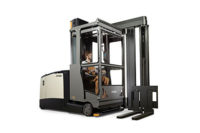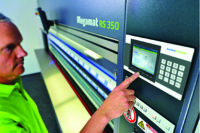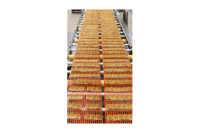How Energy Control Tools Keep Machines Running








Shutting down a line even for a second can create major challenges for a cold food processor. That’s why it’s crucial to make sure machines continuously run, without missing a beat. These top trends and solutions in energy control tools are why today’s machines can keep running.
Next-generation hardware
Hench Control Energy Management Systems, Richmond, Calif., has plans to release its new HTML graphics program by year’s end.
“Once available, customers will be able to access all Hench programs and user interfaces in one location,” says Matt Chang, vice president of sales and marketing. “This includes our graphics program, ControlMaster program, alarming program, trending program, reports and more, all accessible through one single user sign-on instead of having to go into each of these programs separately as they are now.”
Also in the works for late 2015 is the company’s next-generation hardware, which will feature greater redundancy and multiple “servers,” moving inter-controller communication to the requesting controller instead of a master computer.
“Each controller will have its own display in order for the operator to either log in remotely or physically to see what controlling strategies it’s doing in real time at the control panel,” Chang adds. “Another example of this is if controller No. 1 fails, then controller No. 2 can take over the responsibilities of controller No. 1. This would be applicable for situations like evaporator defrost coordination and the automatic sequencing of the compressors.”
Another key feature to Hench’s next-general hardware is the maintenance mode to the lockout/tagout standard, which acts like a virtual padlock.
“For example, if there are multiple operators working in a food production environment and the first operator enters their password to lockout a piece of equipment (i.e., compressor, evaporator, etc.) and then if another operator needs to work on another aspect of the same piece of equipment, then they will also enter their password. When the first operator returns to remove their tagout (with unique password credentials), then they cannot restart the equipment until the other operator has also returned and enabled their portion.
Monitoring energy performance
Proper controls and maintenance processes not only assure equipment longevity and consistent product temperature, but also optimal energy performance over the life of a piece of equipment or production line, according to Paul Wickberg, principal of Energy Squared, LLC, a Princeton, N.J.-based consulting engineering firm.
“Recently, several companies have developed hardware and software that provides energy performance monitoring at the equipment level,” he adds. “These products make it cost effective to retrofit energy used monitoring to virtually any electrical device, and provide analytics to help clients understand how that particular device performs from an energy standpoint over time.”
Measuring frost accumulation
In November, Logix, Kirkland, Wash., released its IntelliFrost Automatic Defrost System for industrial refrigeration evaporators. IntelliFrost directly measures frost accumulation on an air unit’s fins and initiates a defrost sequence only when the frost level reaches a user-adjustable limit.
How it works is, two frost sensor probes on either side of the air vent capture frost formation, thus eliminating excessively long defrost cycles.IntelliFrost uses real-time data about frost presence, reducing defrost cycles and related energy costs by 15-80%. This system also directly measures frost accumulated between two fins of an air unit and initiates a defrost sequence when the frost accumulated reaches the user-adjustable fully frosted 100% level.
Automated food temperature management
For its part, CAS DataLoggers, Inc., Chesterland, Ohio, introduced T&D Temperature data loggers, which are wireless devises that issue out alarms the moment a freezer fails and automatically sends temperature data directly to a PC.
The RTR-500 Series wireless dataloggers, for example, measure and monitor ambient temperatures in refrigerators, freezers and warehouses, and can be placed in many different areas in food processing plants and restaurants to track product temperatures. The logger itself is water-resistant and can withstand harsh temperatures as low as -22°F.
The T&D Food Core temperature data logger is ideal for food safety management of steam tables, buffets, catering areas and more. Vendors can quickly check and store internal food temperatures in the middle of work, prevent food hazards and contamination.
Both dataloggers comply with HACCP, FSMA and FDA Title 21 CFR part 11 electronic documentation regulations.
There’s no downtime in the cold food industry with these energy control tools and systems, designed to keep machines running.
Looking for a reprint of this article?
From high-res PDFs to custom plaques, order your copy today!













